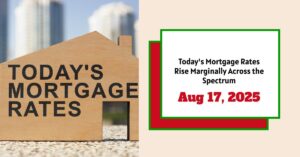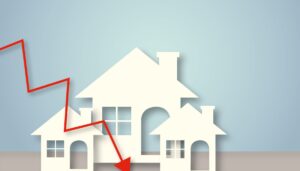If you're thinking about investing in or are currently owning single-family rental homes, you'll want to pay attention to the latest projections from Zillow. My take on it is that single-family rental homes are now expected to appreciate 2.5% annually, according to Zillow's revised forecast. This is a key piece of information for anyone navigating the rental property market, and it tells us that while the rapid rent hikes we've seen might be cooling, rental income is still projected to grow steadily.
Single-Family Rental Homes: A 2.5% Annual Appreciation Forecast
For a while now, it seems like rents have been on a bit of a rollercoaster. We’ve experienced some pretty significant jumps, making it a challenging time for renters and a potentially lucrative one for landlords. However, the market is always shifting, and understanding these shifts is crucial for making smart investment decisions. Zillow's latest outlook suggests a normalization of sorts, with a more predictable, though still positive, rate of appreciation for single-family rentals.
What Does This 2.5% Appreciation Mean for You?
When Zillow talks about appreciation, they're essentially forecasting how much the value of these rental homes is likely to increase over time, driven largely by rental income growth. A healthy rent growth rate translates into higher returns for property owners. This 2.5% annual increase, while not the explosive growth some might have hoped for, is a solid, sustainable rate. It means that if you own a single-family rental home valued at, say, $300,000, you could expect its value to increase by about $7,500 in a year, before accounting for any appreciation in the broader housing market.
It's important to remember that this figure is a forecast, an educated guess based on models and current economic trends. What I find particularly interesting is how Zillow arrives at these numbers. They don't just look at what new tenants are being asked to pay. They factor in how many people move, how many renew their leases, and how landlords adjust rents for those long-term tenants. This is a much more nuanced view than just looking at the “on-market” rent changes.
Deconstructing the CPI and Rent Data
To truly understand the 2.5% figure, it helps to peel back the layers a bit and look at the underlying data, especially concerning the Consumer Price Index (CPI). You might see headlines about inflation, and housing costs are a big part of that. The CPI has two main measures that are relevant here: Owner's Equivalent Rent (OER) and Rent of Primary Residence.
- Owner’s Equivalent Rent (OER): This is a bit of a theoretical measure. It tries to estimate what homeowners would pay to rent their own homes. Zillow predicted a 0.31% increase in OER for July, and the actual release showed a slight dip to 0.28%. While the July number was a tad lower than expected, the overall trend for OER is forecasted to decelerate. Zillow expects OER to finish the year up 3.4% year-over-year, but then take a significant dive to a 1.9% increase in 2026.
- Rent of Primary Residence: This is a more direct measure of what people are actually paying in rent. Zillow had anticipated a 0.18% rise for July, but the actual figure came in a little higher at 0.26%. What's crucial here, and what I find more telling, is that since April, the pace of rent growth has actually slowed down by over a full percentage point. Zillow's forecast for this measure to end the year up 2.7% year-over-year, with a sharp fall to just 0.6% in 2026, really points to a softening in the rental market.
While the CPI measures are slightly different from Zillow’s on-market rent growth forecasts, they are linked. The CPI figures often lag a bit because they include rent changes for existing tenants who might not face market rates as frequently as new renters. This is why the 2.5% appreciation forecast for single-family rentals, which is based on Zillow’s Observed Rent Index (ZORI), is so important. It reflects the current rental market dynamics more directly.
Why the Deceleration in Rent Growth?
Several factors contribute to this expected slowdown in rent appreciation. One of the biggest drivers is the significant deceleration in market rents over the past few months. Think about it: when demand for rentals cools down, or when the supply of available rental properties increases, landlords can't just keep raising rents indefinitely.
We've also seen softening growth in market rents, and this will likely continue to put downward pressure on housing prices within the CPI over time. It’s a bit of a balancing act. For a while, housing costs were a major contributor to inflation across the board. Now, it seems like their impact is moderating.
Another element to consider is the broader economic picture. Factors like interest rate changes, or even shifts in consumer spending due to things like tariffs on goods, can influence the overall demand for housing. When people have less disposable income or face higher borrowing costs, they tend to be more price-sensitive when it comes to rent.
My Perspective: A Reality Check and a Strategic Opportunity
From my experience in real estate, these kinds of adjustments are normal. The market doesn't go up in a straight line forever. What Zillow's forecast suggests is a return to a more stable, predictable appreciation rate for single-family rental homes. This is actually a good thing for long-term investors.
- Stability is Key: While 8-10% annual rent growth might grab headlines, it's often not sustainable. A 2.5% appreciation rate, combined with a solid rental yield, can provide a very healthy passive income stream with less risk.
- Cash Flow Focus: With moderating rent growth, the focus for investors might shift even more towards ensuring strong cash flow from properties. This means looking at the numbers carefully: mortgage payments, property taxes, insurance, maintenance, and vacancy rates.
- The Single-Family Advantage: I still see a lot of value in single-family rentals compared to, say, larger apartment buildings. They often attract longer-term tenants, have lower turnover, and can be less susceptible to the massive rent swings sometimes seen in multi-unit properties. The 2.5% forecast for single-family homes versus a projected 1.0% for apartments further highlights this potential advantage.
- Long-Term Outlook: The forecast of significantly lower rent increases in 2026 (0.6% for Rent of Primary Residence) is a key takeout. This doesn't mean rents will fall, but the rapid acceleration is over, ushering in a period of much slower growth. This is important for cash flow projections and for understanding future profitability.
The Mechanics Behind the Numbers: Zillow's Methodology
It's always good to know how these predictions are made. Zillow's model uses its own Observed Rent Index (ZORI) and looks at the relationship between “on market” rents and the CPI shelter components I mentioned. My understanding of their approach includes:
- Expected On-Market Rent Growth: This is primarily driven by Zillow's own rental forecast data (ZORF).
- Lease Renewal Assumptions: They calculate how often landlords increase rents when leases are renewed.
- Renter Mobility: This factor considers how many tenants move each year, which determines how many are exposed to new, potentially higher, market rents.
This multi-faceted approach gives a more realistic picture than just looking at one data point. It accounts for the fact that not everyone's rent goes up at the same time or by the same amount.
Implications for Investors and Renters
For those looking to acquire single-family rental homes, this forecast signals a market that is stabilizing. It's a time to focus on fundamentals: location, property condition, and conservative financial projections. While the days of astronomical yearly rent increases may be behind us for now, the steadier appreciation of 2.5% annual growth provides a reliable foundation for building wealth through real estate.
For renters, this projected slowdown in rent growth is welcome news. It means the pressure on household budgets might ease, allowing for greater financial stability. However, it's still crucial to budget wisely, as rents are not expected to decrease, merely to grow at a more moderate pace.
Looking Ahead: What to Monitor
The real estate market is dynamic. While Zillow's forecast provides a valuable insight, it's essential to keep an eye on unfolding economic events. We need to watch:
- Interest Rate Policies: Changes in interest rates can significantly impact the cost of mortgages for both buyers and investors, as well as potentially influence tenant spending power.
- Housing Supply: An increase in the supply of available rental homes can naturally lead to more modest rent growth.
- Economic Stability: Overall economic health, job growth, and consumer confidence all play a role in housing demand.
- Inflation Trends: While housing inflation is expected to moderate, broader inflation trends can still affect the cost of property ownership (taxes, insurance, maintenance) and the overall purchasing power of renters.
The projected deceleration in CPI housing inflation measures through late 2025 and 2026, driven by the softening in market rents, is a significant development. The 2.5% annual appreciation forecast for single-family rental homes from Zillow is a key data point in this evolving picture, suggesting a more predictable and potentially sustainable period ahead for real estate investors.
Real Estate Investment in the Top U.S. Markets
Discover high-quality, ready-to-rent properties designed to deliver consistent returns.
Contact us today to expand your real estate portfolio with confidence.
Contact our investment counselors (No Obligation):
(800) 611-3060
Also Read:
- Best Places to Invest in Single-Family Rental Properties in 2025
- Why Real Estate Can Thrive During Tariffs Led Economic Uncertainty
- Rise of AI-Powered Hyperlocal Real Estate Marketing in 2025
- Real Estate Forecast Next 5 Years: Top 5 Predictions for Future
- 5 Hottest Real Estate Markets for Buyers & Investors in 2025
- Will Real Estate Rebound in 2025: Top Predictions by Experts
- Recession in Real Estate: Smart Ways to Profit in a Down Market
- Will There Be a Real Estate Recession in 2025: A Forecast
- Will the Housing Market Crash Due to Looming Recession in 2025?
- 4 States Facing the Major Housing Market Crash or Correction
- New Tariffs Could Trigger Housing Market Slowdown in 2025
- Real Estate Forecast Next 10 Years: Will Prices Skyrocket?










